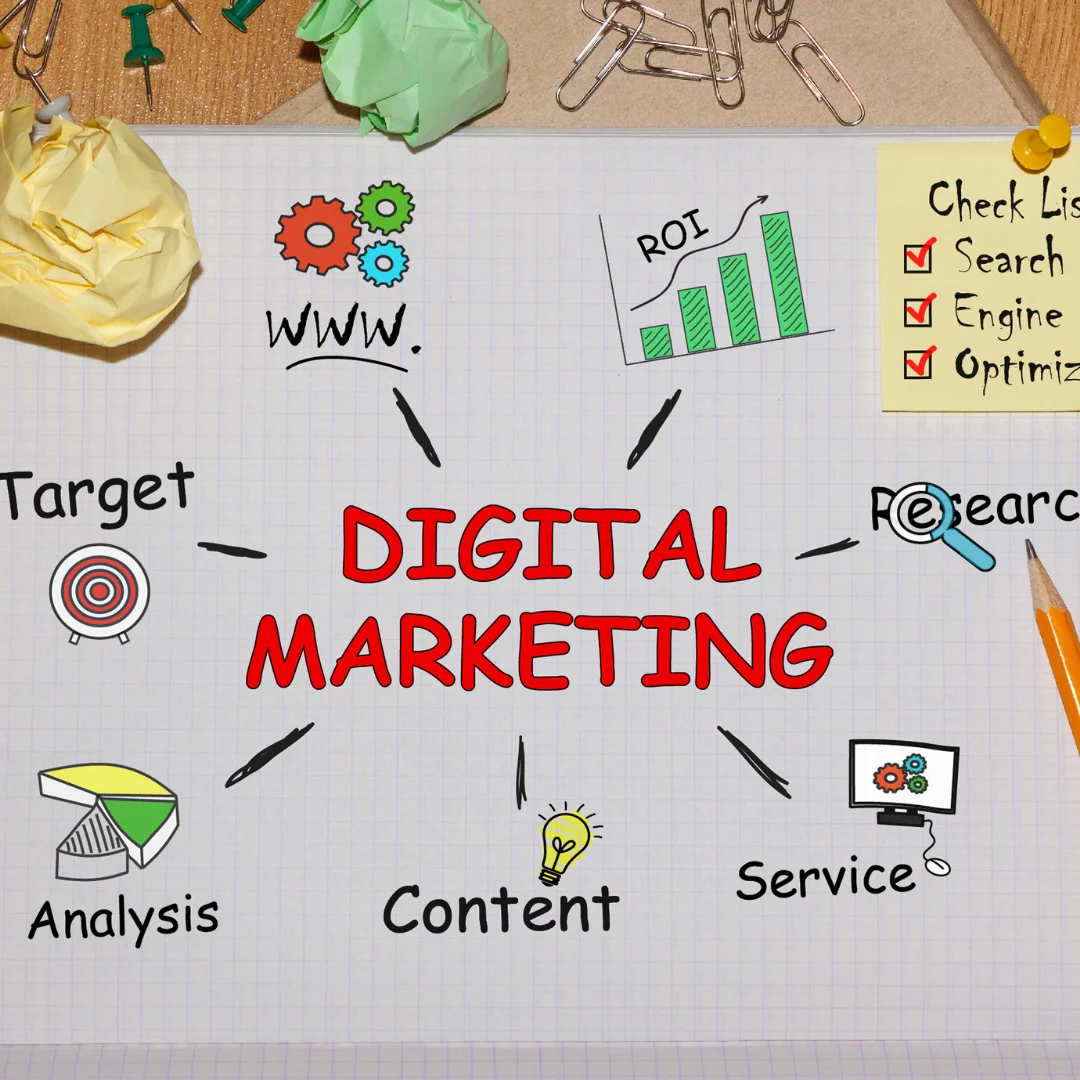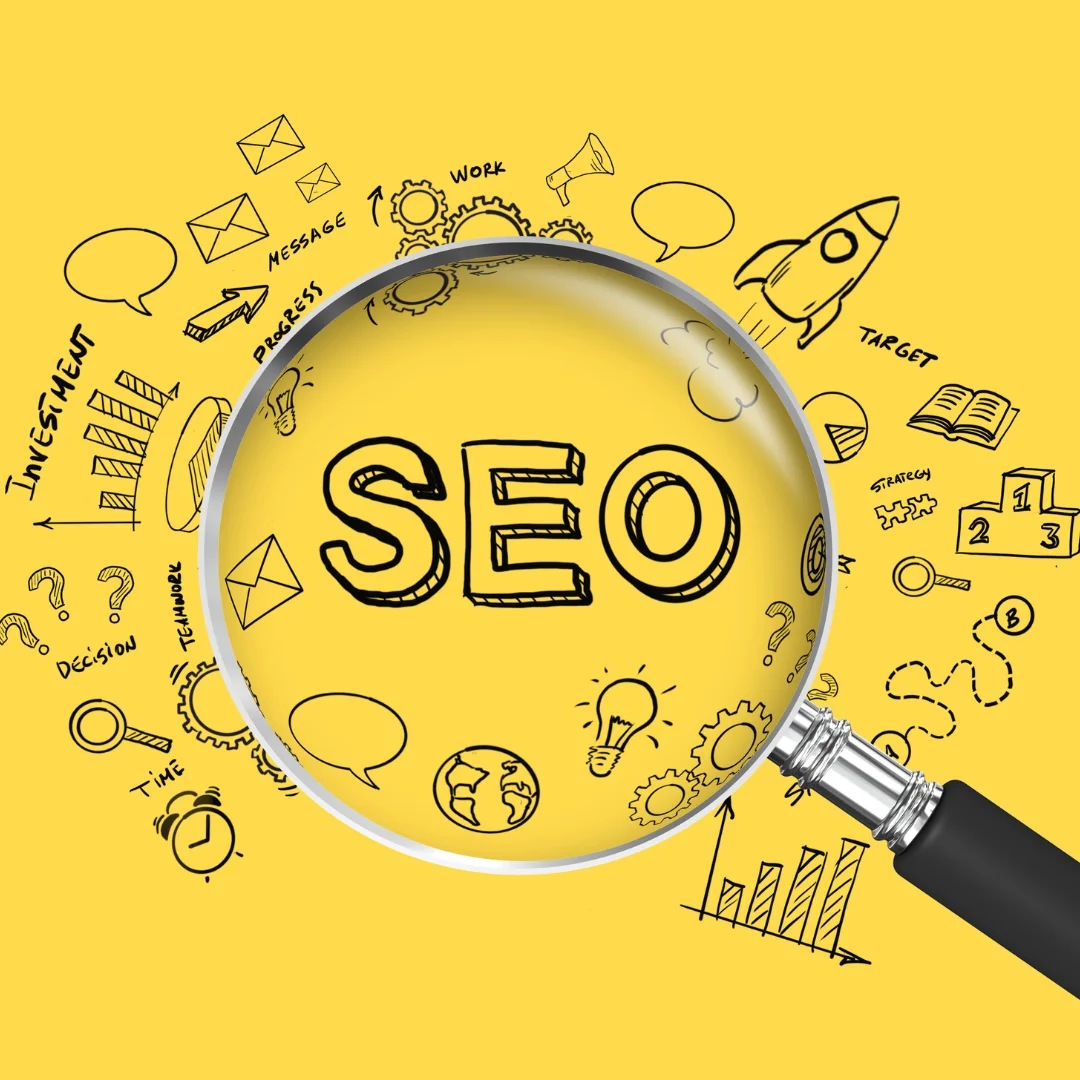Email marketing is one of the oldest digital marketing strategies, but it remains one of the most effective. For businesses looking to connect directly with customers and drive consistent results, email marketing offers a tried-and-true approach with an incredibly high return on investment (ROI). With nearly half the world using email daily, the potential for customer reach and engagement is unparalleled. This article covers the essentials of email marketing, its benefits, inspirational case studies, top email platforms, and strategies for effective campaigns. Let’s dive into the world of email marketing and see why it deserves a place in your digital strategy!
Benefits of Email Marketing
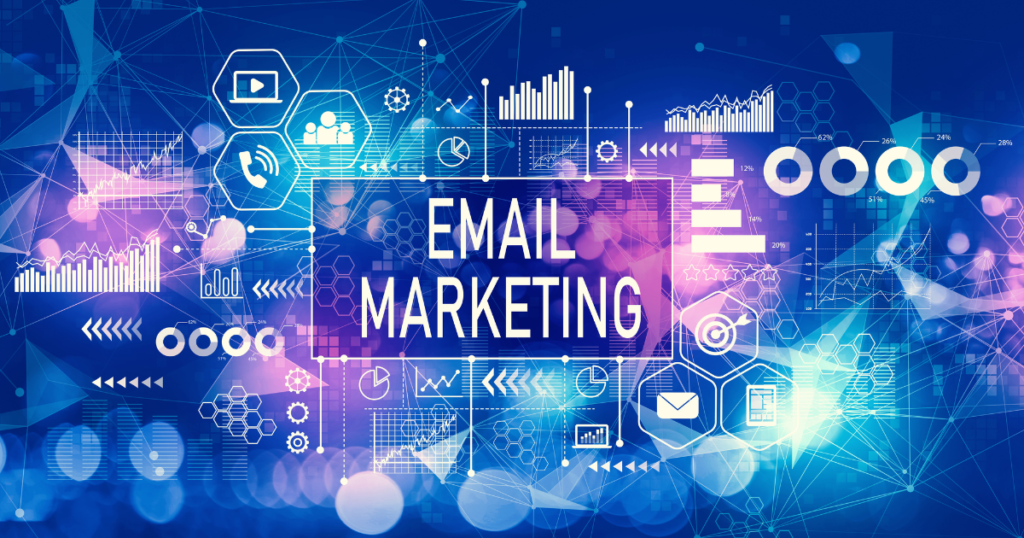
Email marketing isn’t just an old-school tactic — it’s a powerful tool for any business looking to reach customers directly, affordably, and effectively. Here’s a closer look at why email marketing deserves a place at the top of your digital toolkit:
High Return on Investment (ROI)
One of the best-kept secrets in digital marketing? Email marketing has an astonishing return on investment (ROI). For every $1 spent on email marketing, businesses can expect an average return of $36! This impressive figure shows how email marketing can boost a business’s bottom line without breaking the budget.
“Email marketing is the most cost-effective way to communicate with your customers.”
– Neil Patel
Table 1: Email Marketing ROI Comparison with Other Channels
| Marketing Channel | Average ROI per $1 Spent |
|---|---|
| Email Marketing | $36 |
| Social Media Ads | $11 |
| Paid Search | $7 |
| Direct Mail | $5 |
So, what makes email marketing so special? Simple: the personal touch and direct line to your audience’s inbox! Unlike ads that pop up and fade away, emails stick around, waiting for your customer’s attention — and that kind of access is priceless.
Widespread Usage and Reach
Another reason email marketing reigns supreme is its reach. With over 4.5 billion email users worldwide and counting, email remains one of the most widely used communication tools on the planet. Want to reach customers? Odds are, they’re already in their inbox.
And the future? Even brighter. Email usage is only expected to grow, with an estimated 4.8 billion users by 2027. For any business looking to get the word out, that’s a massive potential audience. No other digital channel can match this widespread adoption.
Table 2: Global Email Users – Current and Projected
| Year | Number of Email Users (Billion) |
|---|---|
| 2023 | 4.5 |
| 2025 | 4.7 |
| 2027 | 4.8 |
With email marketing, you’re not just reaching a few people here and there; you’re tapping into a network that spans the globe, ready to connect with your message.
Effective Customer Engagement
The beauty of email marketing lies in its ability to engage customers. Unlike social media or ads that can be easy to overlook, emails give you a direct line to each customer. And thanks to automated campaigns and personalized content, email marketing can be even more engaging.
For instance, abandoned cart emails are a game-changer. Customers who’ve left items in their carts can get a quick reminder in their inbox, gently nudging them to complete their purchase. It’s like having a helpful assistant reminding them of what they wanted — without the pushiness!
Personalization, too, plays a key role. Tailoring emails to each customer’s interests or past interactions makes them feel valued and seen. An email with their favorite products or special offers is much more engaging than a generic message. And it works: studies show that personalized emails have 6x higher transaction rates than non-personalized ones.
Preferred Communication Channel
Despite the rise of social media, email is still the preferred way for many people to interact with brands. About 60% of consumers prefer to get promotional content via email rather than social media. This is especially true when customers want to keep things private — emails offer a controlled, personal space that social media just can’t match.
In an era where online privacy is a growing concern, emails feel safer and more personal. Customers can keep their inbox organized, review emails at their convenience, and interact with brands in a way that feels less public. This makes email marketing the ideal choice for building lasting, trusting relationships with your audience.
Table 3: Preferred Communication Channels for Promotions
| Channel | Percentage of Preference |
|---|---|
| 60% | |
| Social Media | 25% |
| Direct Mail | 10% |
| SMS | 5% |
With email marketing, you’re meeting your audience where they want to be met. It’s the channel people choose to get updates, deals, and news from brands they trust.
Consistent, Trackable Performance
Email marketing also shines when it comes to measuring results. Want to know how many people opened your message? Or clicked on a link? Or even made a purchase directly from your email? Email marketing platforms provide all this data, giving you precise insights into what’s working and what needs improvement.
Pro Tip: A/B testing in email marketing can be a game-changer! Try different subject lines, call-to-action buttons, and images to see what your audience likes best. It’s like having a digital test kitchen, where you can tweak and perfect each campaign for maximum impact.
Table 4: Key Email Marketing Metrics and Their Importance
| Metric | What It Measures |
|---|---|
| Open Rate | Audience interest in your subject line |
| Click-Through Rate (CTR) | Content relevance and engagement |
| Conversion Rate | Actions taken after clicking (sales, sign-ups) |
| Bounce Rate | Quality of email list and deliverability |
With these metrics, email marketing doesn’t leave you guessing. You get real numbers to guide your strategy and see how your campaigns are performing, allowing you to make data-driven decisions.
Email Marketing Case Studies That Inspire Success Stories
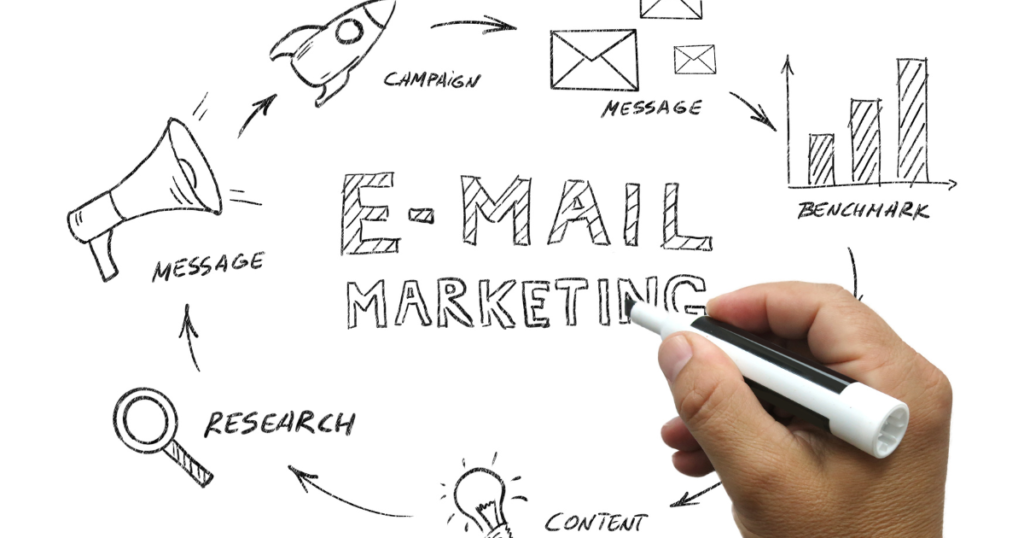
Real-world success stories prove just how impactful email marketing can be. These case studies highlight different approaches, showing the flexibility of email marketing to adapt and succeed across various industries. From personalized campaigns to multi-channel integrations, here’s how these brands leveraged email marketing to achieve impressive results.
Sendlane’s Impact on RXSG: Multi-Channel Power Boosts Revenue
RXSG, a fitness equipment brand, was on a mission to grow their customer base and increase revenue. They turned to Sendlane, an email marketing platform known for its powerful automation and integration features, to create a seamless customer experience across email and SMS.
The Strategy: RXSG used Sendlane’s multi-channel marketing to communicate with their customers on multiple fronts — integrating email and SMS campaigns that worked together. For example, a customer who didn’t open an email about a new product launch would receive a quick, friendly reminder via SMS, encouraging them to take another look.
The Results: This approach led to a notable increase in engagement and revenue. With the tech stack integration, RXSG saw improved open rates and click-throughs across their campaigns. But most importantly, they were able to keep their customers informed and engaged, all while increasing sales.
| RXSG’s Multi-Channel Campaign Outcomes | Before | After |
|---|---|---|
| Revenue Growth | +15% | +45% |
| Customer Engagement | +20% | +50% |
| Open Rate | 18% | 30% |
Key Takeaway: RXSG’s experience shows the power of combining email and SMS for an all-encompassing reach. By meeting customers on the platforms they prefer, they maximized engagement and revenue. When it comes to email marketing, sometimes two channels are better than one!
Skybound Entertainment’s Personalized Approach: From 40% to 80% Open Rates
Skybound Entertainment, a media and entertainment company, knew that personalization could take their email campaigns to the next level. With a loyal fan base and tons of valuable customer data, Skybound leaned into personalized content to make each subscriber feel seen and valued.
The Strategy: By analyzing customer data, Skybound tailored their content to align with individual preferences. Subscribers received emails customized with their favorite characters, genres, or product types, ensuring each email felt relevant and engaging.
The Results: The results were astonishing. Their open rates skyrocketed from 40% to a massive 80%, proving that personalization wasn’t just a trend but a crucial part of successful email marketing.
“Personalization is not just a trend; it’s a necessity in today’s market.”
– Ann Handley
| Skybound’s Personalization Success | Before Personalization | After Personalization |
|---|---|---|
| Open Rate | 40% | 80% |
| Click-Through Rate | 12% | 25% |
| Customer Engagement | Moderate | High |
Key Takeaway: Skybound’s personalized approach proves that people love to feel like they’re part of something unique. By using data to understand their audience better, they created a truly engaging experience that kept subscribers coming back for more.
Klaviyo’s Success with Heist Studio’s Targeted Campaigns: Precision Drives Profits
Heist Studios, a fashion brand specializing in hosiery, partnered with Klaviyo to step up their email game. Heist was already running campaigns but wanted to boost revenue by targeting their messages to specific customer segments.
The Strategy: Klaviyo helped Heist segment their audience based on factors like past purchases, browsing behavior, and demographic data. They then crafted emails tailored to each group’s interests, making each email feel like it was handpicked for the recipient.
The Results: This hyper-targeted approach delivered big time. Heist saw a 66% increase in revenue from their email campaigns, proving that a “one-size-fits-all” approach is rarely the best option in email marketing.
| Heist Studio’s Segmentation Success | General Campaign | Segmented Campaign |
|---|---|---|
| Revenue Increase | +30% | +66% |
| Customer Retention | +20% | +40% |
| Email Engagement | Moderate | High |
Key Takeaway: Heist’s experience shows the importance of targeting in email marketing. By delivering content that felt personally relevant, they didn’t just increase revenue; they strengthened customer loyalty.
Glossier’s Abandoned Cart Email Magic: Recovering Lost Sales
Glossier, a popular skincare and beauty brand, was losing out on sales when customers abandoned their online shopping carts. So, they decided to implement an abandoned cart email sequence to bring these shoppers back to complete their purchases.
The Strategy: Glossier crafted a series of friendly, engaging emails that gently reminded customers about the items left in their carts. Each email included a clear call-to-action and occasionally featured customer reviews to give shoppers that extra nudge.
The Results: Glossier’s abandoned cart emails achieved an impressive 35% recovery rate. These emails became a crucial part of their email marketing strategy, helping to maximize sales from existing traffic.
| Glossier’s Abandoned Cart Campaign Results | Before | After |
|---|---|---|
| Abandoned Cart Recovery Rate | 10% | 35% |
| Revenue from Recovered Sales | Moderate | High |
| Customer Engagement | Moderate | High |
Key Takeaway: Glossier’s experience highlights the power of a well-crafted abandoned cart email. With a few reminders and customer testimonials, they were able to turn missed opportunities into completed sales. For any brand, recovering abandoned carts can make a huge difference.
Airbnb’s Re-Engagement Campaign: Bringing Back Inactive Users
Airbnb, the global travel platform, wanted to reconnect with inactive users who hadn’t booked or engaged in a while. They used a re-engagement email campaign to win back these customers and remind them of the unique travel experiences they could book.
The Strategy: Airbnb sent visually appealing emails highlighting popular destinations, along with tailored suggestions based on each user’s browsing history. The emails also included incentives like limited-time discounts to prompt action.
The Results: Airbnb’s re-engagement campaign brought back over 20% of inactive users, helping to revitalize their customer base and increase bookings.
| Airbnb’s Re-Engagement Success | Before Campaign | After Campaign |
|---|---|---|
| Active Users (Previously Inactive) | Low | +20% |
| Conversion Rate | Low | +15% |
| Customer Loyalty | Moderate | High |
Key Takeaway: Re-engagement campaigns can breathe new life into a dwindling subscriber list. Airbnb’s use of visually engaging, personalized emails with a clear call-to-action is a great example of how brands can bring back inactive users.
Top 9 Email Marketing Platforms You Should Consider in 2024

Selecting the right email marketing platform can transform your business by helping you reach customers in ways that feel personal and engaging. With so many platforms available, choosing one can be a challenge. To simplify the decision, here’s a rundown of the top 9 email marketing platforms in 2024, highlighting what each one does best, who it’s ideal for, and its unique features.
1. HubSpot: The Ultimate CRM-Integrated Email Solution
Best For: Businesses needing a fully integrated CRM with email marketing features.
HubSpot goes beyond email marketing by offering a complete suite of inbound marketing, sales, and customer service tools. Its powerful CRM allows businesses to track leads, automate workflows, and create targeted email campaigns all in one place. With HubSpot, you’re not just reaching out to customers; you’re building an ongoing relationship through personalized interactions.
| HubSpot Features | Details |
|---|---|
| CRM Integration | Seamless lead tracking and management |
| Personalization Options | Customizable templates and workflows |
| Automation Capabilities | Triggered emails based on user actions |
| Analytics and Reporting | Detailed insights for data-driven decisions |
2. MailChimp: The Go-To Platform for Beginners and eCommerce
Best For: Beginners and small businesses.
MailChimp has a reputation for being easy to use, making it a solid choice for beginners. The platform offers a range of automation features, enabling businesses to send welcome emails, abandoned cart reminders, and more. MailChimp also integrates well with popular eCommerce platforms like Shopify, which is why it’s often favored by online retailers.
| MailChimp Features | Details |
|---|---|
| User-Friendly Interface | Drag-and-drop editor for easy setup |
| eCommerce Integrations | Connects with Shopify and WooCommerce |
| Automation Features | Pre-built workflows for easy automation |
| Analytics Tools | Basic to advanced insights |
3. Klaviyo: eCommerce-First Email and SMS Marketing
Best For: eCommerce businesses focused on personalization.
Klaviyo is designed with eCommerce in mind, offering powerful tools for segmenting audiences and creating personalized campaigns at scale. This platform combines email and SMS marketing, making it easy to reach customers on their preferred channels. Klaviyo’s robust analytics help businesses optimize their marketing strategies based on real-time data.
| Klaviyo Features | Details |
|---|---|
| eCommerce Integration | Syncs with Shopify, Magento, BigCommerce |
| SMS Marketing | Combines email and SMS campaigns |
| Advanced Segmentation | Tailored messages for different audiences |
| Real-Time Analytics | Track customer behavior and conversions |
4. Emarsys: The Champion of Omnichannel Engagement
Best For: Brands wanting a seamless omnichannel experience.
Emarsys takes email marketing to the next level by incorporating an omnichannel approach. With tools to create personalized experiences across email, SMS, mobile, and social media, it’s ideal for brands aiming to engage customers through multiple channels. Emarsys is also known for its AI-driven recommendations, helping businesses deliver the right message at the right time.
| Emarsys Features | Details |
|---|---|
| Omnichannel Marketing | Email, SMS, social media integration |
| AI-Powered Personalization | Automated content recommendations |
| Advanced Reporting | Comprehensive performance insights |
| Multi-Device Optimization | Responsive designs for all devices |
5. Omnisend: Automation Made Easy for eCommerce
Best For: eCommerce businesses looking to retain customers.
Omnisend specializes in helping businesses retain customers with automated email campaigns. The platform integrates with popular eCommerce sites and offers tools to create personalized promotions and abandoned cart reminders. Its focus on automation and targeting makes it easy for online stores to maintain customer engagement.
| Omnisend Features | Details |
|---|---|
| Integration with eCommerce | Works with Shopify, WooCommerce, etc. |
| Automated Campaigns | Personalized follow-ups and promotions |
| Segmentation Options | Targeted messages based on behavior |
| SMS and Email Marketing | Multichannel reach for higher impact |
6. Constant Contact: Robust Tools for Small to Medium Businesses
Best For: Small to medium-sized businesses needing versatile marketing tools.
Constant Contact provides more than just email marketing. With event marketing, social media integration, and automation features, it’s a well-rounded platform for small to medium businesses. Known for its intuitive design tools, Constant Contact is ideal for companies wanting a professional look without complex setup.
| Constant Contact Features | Details |
|---|---|
| Easy-to-Use Design Tools | Drag-and-drop email builder |
| Social Media Integration | Connect with Facebook and Instagram |
| Event Management | Great for RSVPs and webinars |
| Reporting and Analytics | Track open rates and click-throughs |
7. ActiveCampaign: Ideal for Advanced Automation
Best For: Businesses needing advanced marketing automation.
ActiveCampaign excels in providing sophisticated automation workflows. With features like conditional content, predictive sending, and contact scoring, this platform allows businesses to customize emails based on user actions. It’s best for companies with complex marketing strategies looking to streamline their workflows.
| ActiveCampaign Features | Details |
|---|---|
| Advanced Automation | Triggered emails based on behavior |
| Conditional Content | Custom messages for different audiences |
| Predictive Sending | Sends emails at optimal times |
| Lead Scoring | Prioritize high-potential leads |
8. GetResponse: Great for Webinars and Marketing Automation
Best For: Businesses interested in combining webinars with email marketing.
GetResponse stands out by offering webinar capabilities along with email marketing. This platform is perfect for businesses that want to engage customers with interactive content. GetResponse also includes marketing automation, allowing companies to set up personalized customer journeys.
| GetResponse Features | Details |
|---|---|
| Webinar Hosting | Host and promote webinars |
| Email Marketing Automation | Personalized customer journeys |
| Landing Page Creator | Design custom landing pages |
| Conversion Tracking | Monitor user engagement |
9. Brevo (ex SendinBlue): A Cost-Effective Solution with SMS Integration
Best For: Budget-conscious businesses wanting SMS and email integration.
SendinBlue offers a budget-friendly platform with essential email marketing and SMS features. It’s a popular choice for small businesses and startups because of its affordability and ease of use. SendinBlue’s automation features also make it easy to build simple but effective workflows.
| SendinBlue Features | Details |
|---|---|
| Affordable Pricing | Ideal for small budgets |
| Email and SMS Integration | Reach customers through multiple channels |
| Basic Automation | Simple workflows for engagement |
| A/B Testing | Optimize emails for better results |
Comparative Analysis of Top 9 Email Marketing Platforms: Pros and Cons
To help you choose the best platform for your needs, here’s a comparative look at the pros and cons of each option:
| Platform | Pros | Cons |
|---|---|---|
| HubSpot | Powerful CRM integration; ideal for inbound marketing | Higher price point for premium features |
| MailChimp | Easy to use; integrates well with eCommerce platforms | Limited automation on the free plan |
| Klaviyo | Great for eCommerce; advanced segmentation | Can be costly for larger lists |
| Emarsys | Omnichannel engagement; AI-powered personalization | Complex setup may require technical assistance |
| Omnisend | Good for customer retention; works well with eCommerce | Limited analytics on lower-tier plans |
| Constant Contact | Versatile tools; event management | Limited automation compared to other platforms |
| ActiveCampaign | Advanced automation; predictive sending | Steeper learning curve for beginners |
| GetResponse | Webinars and landing pages; marketing automation | Basic plan lacks some advanced features |
| SendinBlue | Budget-friendly; SMS integration | Limited features on free plan |
These platforms offer unique strengths suited for different business needs, from CRM integration to budget-friendly options. Selecting the best one depends on your goals, budget, and desired features, but any of these nine options can help you achieve impactful results with your email marketing campaigns.
Strategies for Effective Email Marketing Campaigns That Drive Results

Implementing the right strategies can transform your email marketing into a results-driven powerhouse. Below are essential strategies to boost engagement, conversions, and overall effectiveness in your email marketing campaigns.
Personalization Beyond First Names
Personalization is more than just adding a subscriber’s first name in the subject line. Effective email marketing today means leveraging customer data to personalize entire email experiences. Tailor your content based on user behavior, purchase history, or even browsing history. Emails that feel handpicked for each recipient see higher open rates and conversions because they provide genuinely relevant content.
Table 1: Personalization Levels in Email Marketing
| Level | Description | Example |
|---|---|---|
| Basic | Using name or location | “Hi Sarah, check out new products!” |
| Behavioral | Based on user actions | “Missed out on this item?” |
| Predictive | Based on predictive analytics | “You might like these” |
Email Segmentation Techniques That Work
Segmentation divides your subscriber list into smaller groups based on certain criteria, like behavior, demographics, or interests. Sending segmented emails leads to much higher engagement because each group receives content they actually care about.
Effective Segmentation Techniques:
- Demographic Segmentation: Segment based on age, gender, or location.
- Behavioral Segmentation: Use subscriber actions, like past purchases or browsing habits.
- Engagement-Based Segmentation: Target based on how often users interact with your emails. For example, re-engagement campaigns for inactive subscribers can help revive interest and keep your list engaged.
A/B Testing Strategies to Enhance Your Emails’ Performance
A/B testing, or split testing, is a crucial method for optimizing your emails. By experimenting with different variables, you can identify what resonates most with your audience.
Key Areas to Test
- Subject Lines: Test different subject lines to see which grabs the most attention.
- Send Times: Some audiences are more likely to engage in the morning; others prefer the evening.
- Content Layouts: Compare layouts like image-heavy vs. text-heavy to see what drives clicks.
Table 2: A/B Testing Components in Email Marketing
| Variable | Why Test It? | Example |
|---|---|---|
| Subject Line | Affects open rate | “Don’t Miss Out!” vs. “Special Deal Inside” |
| CTA Button | Drives conversions | “Shop Now” vs. “See Our Collection” |
| Send Time | Improves open and click-through rates | Morning vs. Evening |
How to Analyze A/B Testing Results
- Statistical Significance: Make sure the sample size is large enough for accurate results.
- Metrics to Watch: Track open rates, click-through rates (CTR), and conversion rates for each version. The winning variation provides insights that can guide future campaigns.
Creating Targeted Campaigns That Resonate
A successful targeted campaign addresses the specific needs and interests of each audience segment, allowing recipients to feel more connected to your brand.
Steps to Develop Effective Targeted Campaigns
- Identify Key Audience Segments: Analyze your audience data to identify groups with similar interests.
- Craft Messages for Each Segment: Once you know what makes each segment tick, craft your email to speak directly to that interest.
- Use Dynamic Content Blocks: With dynamic content, you can change certain email elements depending on the subscriber’s segment, making it possible to send personalized messages to a large list without creating separate emails for each group.
Example: A sportswear company can target different segments with tailored promotions, such as running gear for fitness enthusiasts or winter sports apparel for skiers.
Table 3: Examples of Targeted Campaigns in Email Marketing
| Segment | Targeted Content | Example Campaign |
|---|---|---|
| Fitness Enthusiasts | Promotions on running gear | “Get Fit with Our Running Deals!” |
| Frequent Shoppers | Loyalty rewards or VIP sales | “You’re Invited to Our Exclusive Sale” |
| Inactive Users | Re-engagement campaign with a discount | “We Miss You! Here’s 10% Off” |
Measuring Success in Email Marketing: Metrics That Matter

Tracking the right metrics provides invaluable insight into the performance of your email marketing campaigns, helping you make data-driven decisions.
Understanding Email Metrics That Drive Results
Below are the essential metrics to monitor and what each tells you about your campaign’s success:
- Open Rate: This is the percentage of recipients who open your email, and it’s often a direct reflection of how compelling your subject line is.
- Click-Through Rate (CTR): Measures how many subscribers clicked on a link in the email. A strong CTR indicates your content was engaging and aligned with the audience’s interests.
- Conversion Rate: Tracks the percentage of users who completed a desired action, like making a purchase. This metric gives insight into how effective your campaign is at driving actual results.
- Bounce Rate: Measures how many emails couldn’t be delivered. A high bounce rate can harm deliverability and indicates it may be time to clean your list.
Table 4: Key Email Marketing Metrics and Their Importance
| Metric | What It Measures | Importance |
|---|---|---|
| Open Rate | Interest in subject line | Drives first impression |
| Click-Through Rate | Content relevance | Indicates content effectiveness |
| Conversion Rate | Actions taken after clicking | Measures ROI |
| Bounce Rate | Deliverability | Helps improve list quality |
Customer Feedback Mechanisms for Continuous Improvement
Customer feedback is an underused asset in email marketing. Adding feedback requests or Net Promoter Score (NPS) surveys in your emails allows you to capture valuable insights directly from subscribers.
- Net Promoter Score (NPS): Ask customers to rate their likelihood of recommending your brand, then follow up to understand reasons behind low scores.
- Email Surveys: Include short surveys or ask for feedback to learn what subscribers enjoy and what they want to see more of. You could even offer a discount as a thank-you for completing the survey.
Table 5: Effective Customer Feedback Methods in Email Marketing
| Feedback Method | How to Use It | Benefits |
|---|---|---|
| NPS Surveys | Include a 1-10 rating scale in emails | Measures customer loyalty |
| Direct Feedback | Ask specific questions about email content | Gathers actionable insights |
| Follow-Up Surveys | Post-purchase or post-signup surveys | Improves customer experience |
Enhancing Email Engagement Through Personalization and Creativity
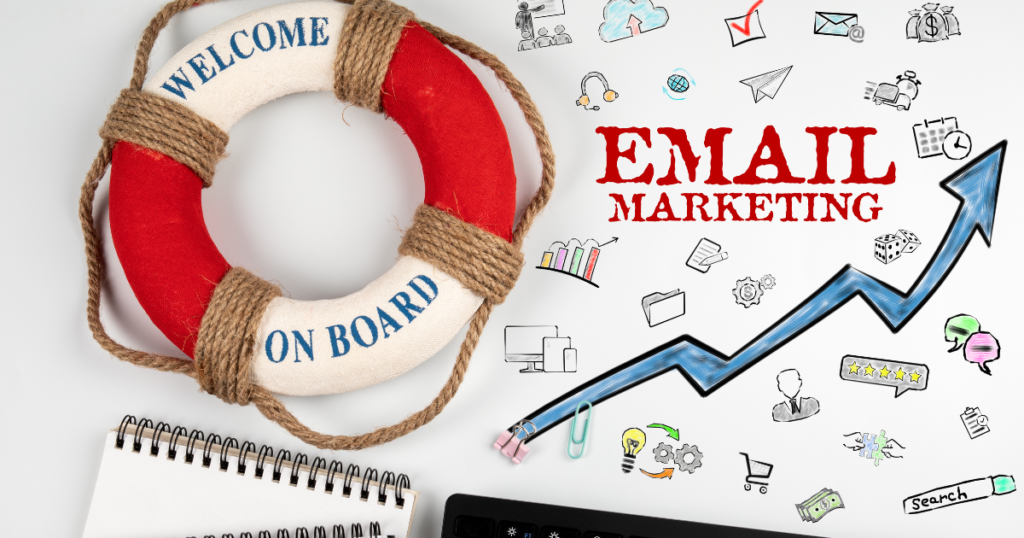
To truly capture and retain your audience’s attention, emails need a personal touch blended with creativity. Personalized, engaging emails have a far higher chance of being read and acted upon than standard, cookie-cutter emails. Let’s dive into how creativity and personalization in email marketing can drive engagement and deliver results.
Adding a Personal Touch with Humor and Storytelling
Personalization can go beyond just adding a name at the top of an email. Injecting humor, sharing relatable stories, and using language that feels more like a conversation than a sales pitch can make emails feel warm and genuine.
- Relatable Stories: People love stories—try starting your email with a brief anecdote that leads into your message. This could be something light-hearted, like a mini-story about how your product saved the day.
- Friendly Tone: A relaxed, conversational tone invites engagement and keeps readers interested. For example, “Picture this: it’s Monday, and your inbox is a mountain. But this email is here to give you a smile!”
Table 1: Creative Personalization Tactics in Email Marketing
| Tactic | Description | Example |
|---|---|---|
| Humor | Light-hearted jokes to add personality | “Need a mid-week pick-me-up?” |
| Storytelling | Brief stories to make content relatable | “Imagine you’re…” |
| Personalized Recommendations | Content based on user behavior | “We thought you’d like…” |
| Engaging CTA | Creative calls to action | “Let’s make it happen!” |
Strategies to Capture Attention and Drive Action
Without an attention-grabbing subject line or opening hook, your email may sink in an inbox sea of promotions and spam. Use creative elements and well-timed sends to get noticed.
- Craft Compelling Subject Lines: Use curiosity or humor in subject lines to spark interest. Avoid clichés and try for something unexpected, like, “Guess What’s New? Spoiler: You’ll Love It!”
- Experiment with Send Times: People are more likely to open emails at specific times—try a few different times to see what works for your audience.
- Curiosity-Piquing Phrases: Instead of “New Collection Inside,” try something like, “Pssst… We’ve Got Something Special Just for You!”
“An email without a hook is like a fish without water—it’s going nowhere!”
– Chad White
Table 2: Techniques for Attention-Grabbing Emails
| Strategy | How It Helps | Example Subject Line |
|---|---|---|
| Curiosity | Entices readers to open | “What’s Behind Door #3?” |
| Humor | Adds a friendly, light touch | “Don’t Open This Email (Or Do)” |
| Exclusivity | Makes readers feel special | “Just for You, VIP” |
| Urgency | Encourages immediate action | “Last Chance! Offer Ends Soon” |
The Power of Data Analytics in Personalizing Your Emails
Data analytics can be a game-changer for personalization, helping you deliver precisely what each subscriber wants. By tracking user behaviors, such as email opens, link clicks, and purchase history, you can tailor your emails to match individual interests. Here’s how to use analytics to power up your email marketing game:
- Behavioral Data: Track clicks, purchases, or website visits. If someone recently viewed a specific product, send a follow-up email with a discount on that item.
- Dynamic Content Based on Actions: Using tools that auto-update content depending on the user’s past actions creates a more customized experience. For example, users who frequently purchase from a particular product category can receive more recommendations in that niche.
Table 3: Using Data Analytics for Personalization in Email Marketing
| Data Source | How to Use It for Personalization | Example Application |
|---|---|---|
| Browsing History | Recommend similar products | “You might also like…” |
| Purchase History | Suggest complementary items | “Complete your look with…” |
| Email Engagement | Segment based on high/low engagement | Re-engagement emails |
| Click Behavior | Refine offers based on clicked links | “Get more of what you love” |
The Future of Email Marketing: Embracing Sustainability and Innovation

Email marketing is constantly evolving, with exciting innovations on the horizon that are not only focused on personalization but also sustainability. Modern consumers care about eco-friendly practices, and adapting your email marketing can help align your brand with these values.
Sustainable Email Practices
More brands are taking steps to minimize their environmental footprint, and email marketing is no exception. Here are a few eco-friendly practices to consider:
- Reduce Image Sizes: Large images consume more energy, so compressing them can make emails faster to load and save energy.
- Limit Unnecessary Emails: Regularly clean your email list to avoid sending emails to inactive users, which wastes resources. A leaner, more engaged list is more sustainable and impactful.
- Eco-Friendly Sign-Offs: Some brands are even signing off with eco-conscious statements, like a simple reminder to consider the environment before printing the email.
“The future of email marketing lies in balancing personalization with privacy and sustainability.”
– Larry Kim
Table 4: Sustainable Email Marketing Practices
| Practice | Benefit | Example |
|---|---|---|
| Smaller Image Sizes | Reduces energy usage | Compressed product images |
| List Hygiene | Reduces resource waste | Remove inactive subscribers |
| Eco-Conscious Reminders | Builds brand image as environmentally aware | “Go green, keep it on screen!” |
Innovations to Watch in Email Marketing
Innovative technologies, including AI and automation, are reshaping email marketing by making it easier to create highly personalized experiences at scale. Here’s a look at some trends to keep an eye on:
- Hyper-Personalization with AI: AI can analyze massive amounts of data to create targeted emails that feel personal. For instance, AI-driven tools can help automate product recommendations based on previous purchases.
- Automated Customer Journeys: Automation can take over tasks like sending welcome emails, onboarding sequences, and follow-up campaigns, ensuring consistent communication with minimal effort.
- Privacy-First Personalization: With growing concerns about privacy, brands are finding creative ways to personalize while protecting customer data, such as anonymized data collection.
Table 5: Email Marketing Innovations for the Future
| Innovation | How It Enhances Email Marketing | Example |
|---|---|---|
| AI-Powered Personalization | Delivers content tailored to user preferences | “Recommended for You” |
| Automated Customer Journeys | Reduces manual work and ensures consistency | “Welcome to our community!” |
| Privacy-First Techniques | Balances personalization with data security | Consent-based targeting |
Encouraged by these trends, there’s no better time to start your own email marketing journey. Take the first step today by signing up for a platform that aligns with your goals, and watch as your customer engagement reaches new heights.
📚💡Extra Resources: Struggling to turn your leads and readers into paying customers through Email Marketing? Discover how to implement proven frameworks in every email to effectively convert your audience into customers within your sales pipeline. Master the A.I.D.A. system to enhance your open rates and engagement. To find out more, [click here].


